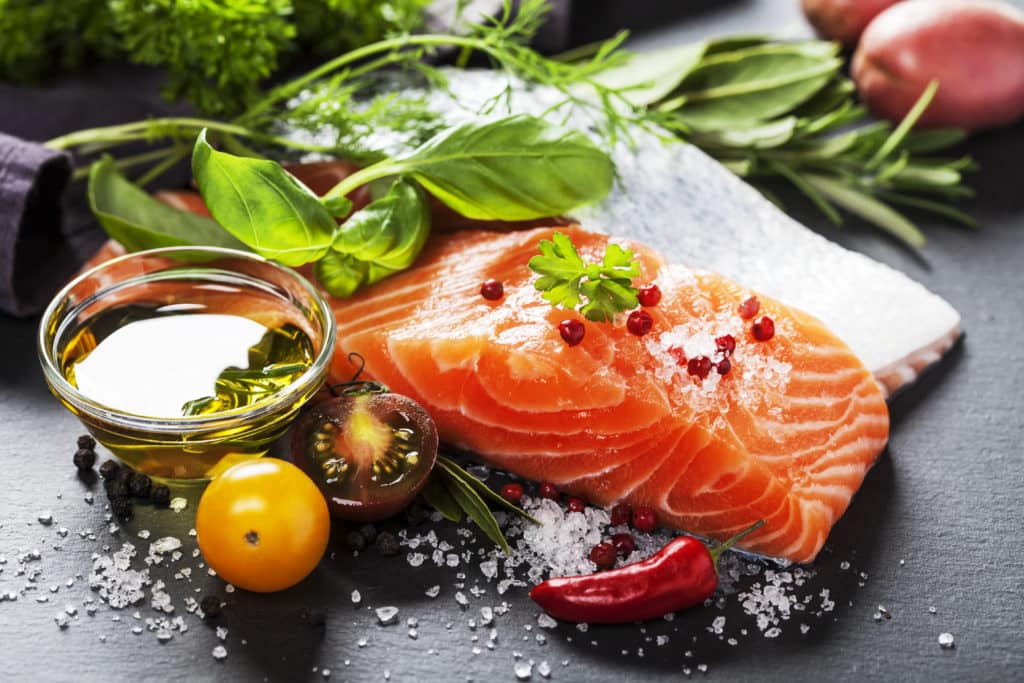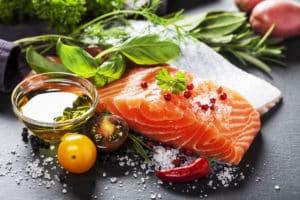
Taste and Flavor

The Basics of Taste and Flavor
Humans all have a sense of taste and flavor but not many know how to utilize them. The saliva that’s in our mouths has antimicrobial properties that protect us, thus, begin to dissolve and break down food so we are able to swallow. Our taste buds hold the 5 basic tastes: Sweet, Sour, Salty, Bitter, and Savory. There is a difference between taste and flavor and to defy the difference when cooking will help you become a better chef.
Taste is the five things you taste on your tongue and flavor is those five things put together to create the aroma. So, if you are having a cup of joe in the morning, you can not only taste the bitter, darkness of the coffee but the aroma of the roasted flavor. Taste + aroma = flavor.
Taste + Aroma = Flavor
Now that we know a little bit more about taste and flavor, let’s do a taste test. Grab some jelly beans, ones that have a mixture of all kinds of flavors. Pick one without knowing what flavor it is, plug your nose and place the jelly bean in your mouth. Try to recognize the texture, acidity and/or sweetness of the bean. Really, you shouldn’t be able to taste a whole lot. Now unplug your nose, you should be able to taste more of the jelly bean as well as the aroma. Hence taste and aroma equal flavor.
Tasting Exercise
Now that you understand a little bit about Taste and Flavor, we will work on another tasting exercise. This exercise is from Chef Bill Briwa, who has worked in the industry for over 30 years and was an educator at The Culinary Institute of America. So let’s get started. Grab a Melon of your choice, Radicchio, lime, sugar and salt. Gather everything you need so you are prepared, slice the melon, radicchio and lime into their own separate bowls. This is what the French would call mise en place, meaning everything in place. As a chef, you should get into the habit of mise en place because it will help you not only be organized with cooking but make the process smooth and quick.
Start with a slice of the melon and take a small bite, obviously it will be sweet. Smell the melon, it should be a flower like aroma, which would indicate its ripe. Now dip the melon in sugar and taste it again. You will notice that something is obviously wrong, the texture and aroma aren’t equal to the same level of sugar.
Everyone loves salt and most Americans consume at least 1.5 teaspoons of salt per day. So, with our melon add a little bit of salt, just enough to give it some seasoning. You’ll notice this makes the melon more satisfying and sweeter. It also lingers longer and you probably wouldn’t think that adding salt to a melon would be more enjoyable. Remember, this is just an exercise so try not to consume too much salt in your daily diet.
The Radicchio is a perennial form of leaf that is mainly used in Italian cuisine. It has a bitter and spicy taste but does calm down after its grilled or roasted. It’s rich in Vitamin K, dietary fiber and contains antioxidants. Now take a slice of the Radicchio and taste it by itself. You probably will not like it, so add some sugar and taste it again. Now it tastes sweeter but it doesn’t last long.
Try another piece of Radicchio but add salt. The bitterness of it is still there, but there’s something different that makes the flavor fuller and less aggressive. Now take the lime and add a few drops. The acidity of it is assertive enough to stand up to the bitterness.
Now you’re going to take the melon and Radicchio and dress them with four or five drops of lime. Season with salt, be assertive this time. Add sugar to the melon, and taste it all together. Think of what you’re tasting, the aroma, and of course the flavor. If you like spicy food, you can add a little cayenne pepper but don’t overdo it because you don’t want to ruin your taste palate. As a learning chef, you will need to take care of your taste palate and try not to damage it from spicy foods. Otherwise, you won’t be able to taste the food you are cooking accurately and therefore, you won’t know if your food tastes good or terrible.
Umami

Every learning chef needs to distinguish this word in order to understand taste and flavor. The word Umami comes from the Japanese phrase for savoriness. It was created by a Japanese chemist named Kikunae Ikeda in 1908 from the noun umai as delicious and mi for taste. Umami is categorized as the fifth basic taste, savory, and as the chemist put it while enjoying a bowl of kelp broth, or seaweed broth, is “the essence of deliciousness.” These savory tastes are described as meaty or brothy with a long-lasting, mouth-watering flavor that coats over the tongue. It then warms your body while being kind and not too heavy on your stomach. Umami is a chemical compound that has glutamates or glutamic acid, which is also known as MSG. Nowadays, that doesn’t get a great reputation but it can be good for you if used responsibly. Just remember that Umami is a flavor, while MSG creates the flavor.
Foods that are strong with Umami are meats, fish, asparagus, tomatoes, mushrooms, meat extract, cheeses and even soy sauce. There’s so much you can create with Umami like sauces, burgers, paste or soups.
Here is a basic Umami sauce to start your taste and flavor journey.
Ingredients:
2 tsp date syrup or date sugar
½ tsp jarred tomato paste
½ tsp black pepper
1 tsp fresh ginger (grated)
1 tbsp blackstrap molasses
1 cup vegetable broth
1 tsp garlic (minced)
1 tsp white miso paste (blended with 2 tbsp water)
2 tsp blended peeled lemon
1 tbsp rice vinegar
Instructions:
Heat up the vegetable broth in a small saucepan over medium heat. Add the garlic and ginger, simmer for 3 minutes.
Stir in the molasses, tomato paste, black pepper and date syrup and bring to a boil.
Reduce the heat to low and simmer for 1-2 minutes.
Remove from the heat and stir in the miso mixture, blended lemon, and rice vinegar. Taste and adjust the seasoning if necessary.
Allow the sauce to cool before pouring it in a jar or glass bottle.
To attend online classes or in-person classes contact us at Salt Lake Culinary Education! 801-797-2921


